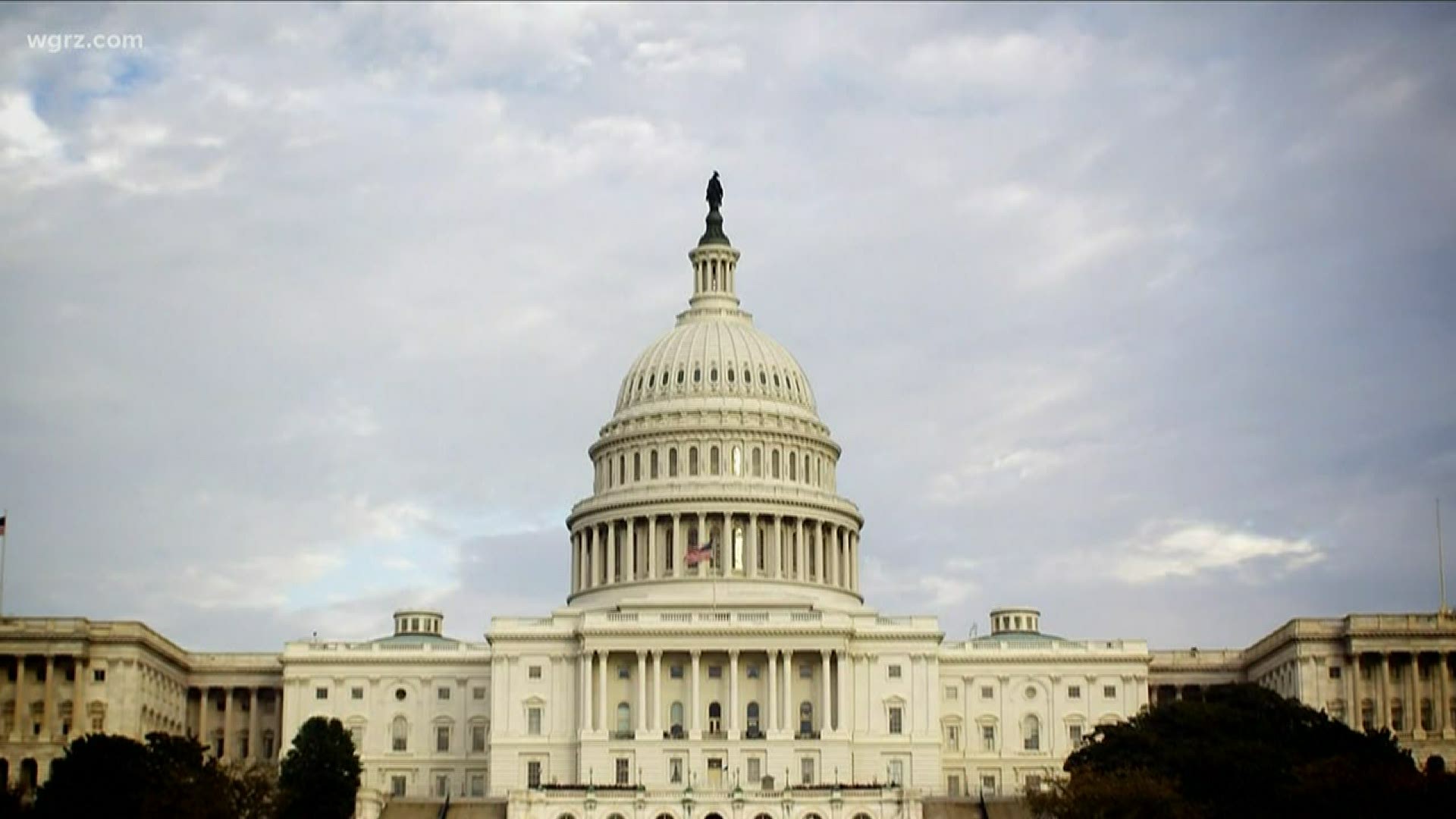BUFFALO, N.Y. — Emergency orders intended to stem the spread of the coronavirus have sent the economy screeching downward and left millions of workers unemployed.
Earlier this month Congress approved $349 billion for the Paycheck Protection Program (PPP), loaning small businesses funds for up to eight weeks of expenses, which they don't even have to pay back if they use 75 percent of it to keep paying employees during the pandemic.
However, within two weeks the entire amount was appropriated, when more than 1.6 million small businesses applied for funding, leaving many others in the cold.
The proprietor of the Howling Rooster restaurant in Kenmore was among those who applied but missed out.
“Basically it was like a Dear John letter … we’re out of money … you didn’t make the cut,” said Caren Paterniti, who opened her restaurant seven years ago.
On Thursday, Congress approved an additional $300 billion for the program, leaving Paterniti hoping that her application will be approved this time around.
“So now I’m just waiting again,” Paterniti said.
But there are several indications that she is waiting in a very long line.
Get in line, sister
Although the money is coming from Washington, the Small Business Administration (SBA) is using the nation's banking system to process the initial applications. So, for small businesses seeking help, their local bank is where they apply.
“I will tell you the larger regional banks already have people in line so they can't take more applications,” said Dottie Gallagher, President of the Buffalo Niagara Partnership, which serves as the regional chamber of commerce in Erie and Niagara Counties.
“They have already completed more applications than they had funding for in the first round."
According to a source, within four hours of reopening the process when the latest bill passed on Thursday, M&T Bank had to pause its application process due to high demand.
A bank spokesperson confirms that despite approving nearly 4,000 loans for small businesses in Western New York worth $800 million during the first round of the process, M&T still had 1,600 applicants who could not be funded before the money gave out.
In a statement, the bank said, “We believe that round two funding will be quickly exhausted, and we want our customers to have reliable information and realistic options. We are committed to assisting our business customers with round three funding, if it becomes available, and many other options, including new credit extensions, payment deferrals and more.”
M&T is certainly not alone, according to Gallagher.
“JP Morgan Chase had $40 billion worth of applications but was only allotted $14 billion through the program, and that kind of ratio has been true of all the other banks," she said.
Controversy from the outset
As far as the SBA is concerned it's first come, first served, as to who gets their loans.
However, with the banks processing the loan applications, they might be in a position of deciding whose application gets preference.
Small businesses, under the terms of the program, are defined as those having 500 or fewer employees.
After the initial round of funding, several class action lawsuits were filed against some of New York’s largest banking institution, alleging they were prioritizing the applications of their larger, small business clients.
Those making such claims allege that a bank is more likely to see that the loans for larger clients are processed, because the loan amount they seek will be larger, and so will the origination fee for the bank.
To partially address those concerns, round two of PPP allotted $60 billion to smaller banks and credit unions that don’t normally process SBA loans.
Gallagher says this should be helpful to the smallest of business, some of whom don’t have commercial banking accounts.
“For some people that don't have a commercial relationship or maybe do their financial transactions through a credit union they can now go about getting those SBA loans,” she said.
M&T, for its part, says that during round one of PPP “approximately 91 percent of our loans were to businesses employing fewer than 50 employees, and 96 percent were to businesses employing fewer than 100 employees.”
Jumping through loopholes
Additionally, there was a provision in the law that allows loans to certain businesses that may have more than 500 employees but not at one specific location.
This allowed, notably, some large restaurant chains to access millions of dollars.
Some have agreed to return the money after being admonished in the court of public opinion, and after being told by the SBA that they were in violation of the “spirit” of the legislation.
Hanging on
Meanwhile, at the Howling Rooster, Paterniti is trying to do her best to hang on by offering takeout after closing for the first two weeks of New York Gov. Andrew Cuomo’s stay-at-home order in March.
But if recent receipts are any indication, it may be a tough row to hoe.
“We did one fifth of what we would normally do on a Thursday," she said, noting that far from making a profit, her sales are now barely enough just to cover expenses.
“I’ve started calling myself a small ‘going out of business’ owner, instead of a small business owner,” she said.

